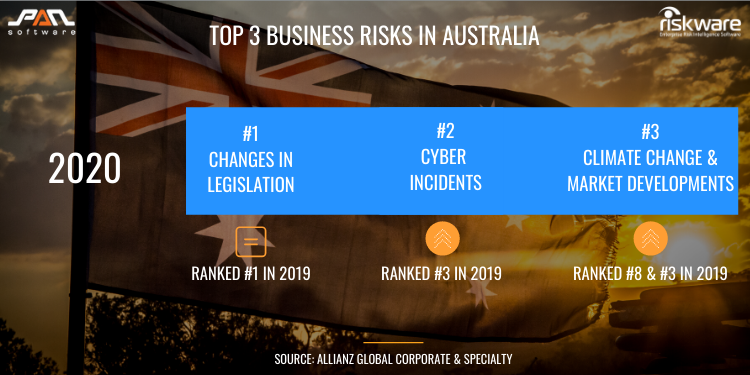The Australian government recently activated its emergency response plan to the impending coronavirus pandemic. Called the "The COVID-19 plan", it provides a strategy to make sure the country is as prepared as possible should there be a large-scale outbreak. While this plan is designed to protect Australia and its people, organisations should also have plans in place for how to manage their business and employees in the midst of emergencies or crises.
Disasters, like bushfires and pandemics as we've seen most recently, can wreak havoc on people and businesses. There are threats locally and globally we often can’t predict, and when something unexpected happens, it highlights the necessity of planning for the worst-case scenario. This is why it's crucial for businesses to have a disaster recovery plan (DRP).
Trends show that risks faced by Australian businesses are rapidly changing and there are new ones to worry about every year. Therefore, the best course of action would be to annually keep aware of and prepare for the biggest risks faced by Australian businesses. To give you some perspective, cyber incidents, which was ranked as the 15th biggest risk for businesses just seven years ago, is now the number one business risk!
In the wake of the horrendous bushfires the country has been facing lately, the need for business continuity planning to protect your business and your customers couldn't be more apparent. As we've covered in the past, business continuity management enables you to identify and reduce potential risks to your business, prepare for risks that are out of your hands and create a plan that guides your staff on what to do if a crisis occurs so you can respond and recover quickly.
Business Continuity Management is essential for every organisation in order to ensure that your business can survive even in the face of crises or disasters, and a Business Impact Analysis (BIA) is the foundation for any solid business continuity framework. A BIA is the step where you identify the processes that are most critical to your organisation. Often companies won't allocate an adequate amount of time or resources to properly identify these factors and instead jump straight into creating recovery strategies and plans. Start with a BIA, so you're covered.
Subscribe
Categories
- Risk Management (23)
- Enterprise Risk Management (18)
- Health & Safety (15)
- Business Continuity (14)
- Media Release (7)
- RiskWare (7)
- Compliance (6)
- Environmental Risk (4)
- Incident Management (3)
- Events (2)
- Artificial Intelligence (1)
- Case Studies (1)
- Corporate Governance (1)
- Government (1)
- Social Movement (1)















Leave a comment